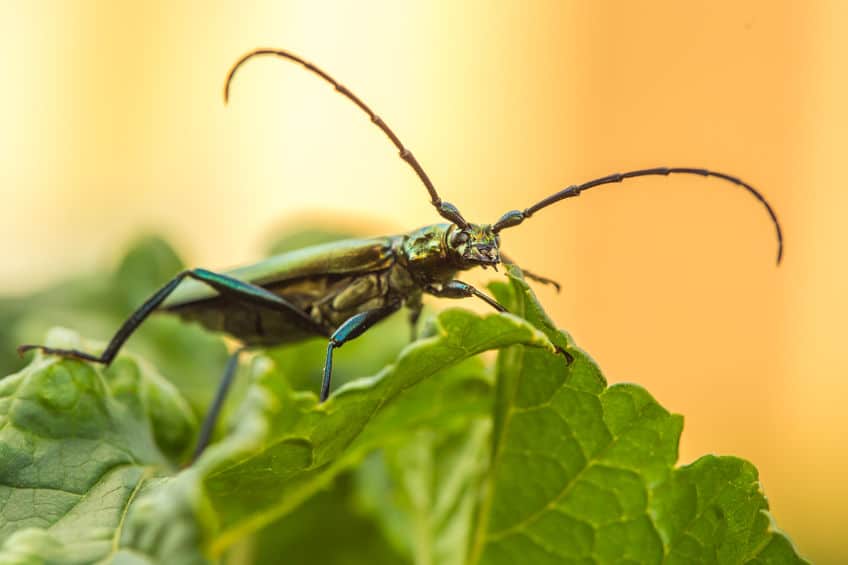The musk beetle, Aromia moschata, is a type of longhorn beetle and is around 1.5 inches (4 cm) in length. They are common in Europe. They have very large antennae that surpass the length of their bodies. The female antennae are not quite as long.
How did the musk beetle get its name?
The musk beetle gets its name from the musky aroma that it releases. When threatened these metallic-colored beetles will release a secretion from their thoracic gland. Sightings of these insects are rare but those that have encountered one have claimed the scent is strong and sweet. The secretion is released near their legs and has evolved to prevent predators such as birds and amphibians from eating them.
What do musk beetles eat?
Like most beetles, musk beetles are herbivores. They particularly love sugary foods. They have even been witnessed chasing away flies from watermelons. They are attracted to nectar, flower petals, and fruits. This activity makes them excellent pollinators.
How do musk beetles use camouflage?
One of the most exceptional things about the musk beetle, apart from that musky secretion, is its coloring. A metallic green shine covers their exoskeleton and is quite startling. The function of the coloring is to help with camouflage. The coloring and reflection can fool predators into perceiving the beetle as a reflection of water. A bird flying overhead will struggle to differentiate them from shimmering water. Some scientists also suggest that the coloring might attract a mate from afar.

What is the musk beetle’s habitat?
They love wetlands. Musk beetles are perfectly suited to life in the wetlands. Their camouflage helps the beetle to appear like a droplet of water helping to keep it undetected. They also lay their eggs in willow trees which are predominantly suited to wetlands.
How long does it take musk beetle larvae to fully develop into adults?
The larvae take 3 years to develop into adults. A female will lay her eggs in the wood of a living willow tree in the summer. Once hatched the larvae of the musk beetle can take up to 3 years to evolve into adult form. Far longer than many other insects. During this time they bury into and feed on wood leaving telltale holes.
Are musk beetles endangered?
Although the musk beetle is not endangered at the moment, it is at risk of becoming endangered. With the fact that wetlands are constantly being encroached upon by humans, beetles are losing their habitat. Three related species in the longhorn family have gone extinct since 1938. They are the Red-collared longhorn beetle, Obrium cantharinum and the great wasp beetle. (Source)
